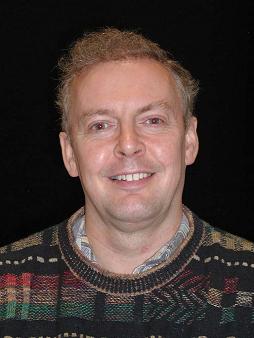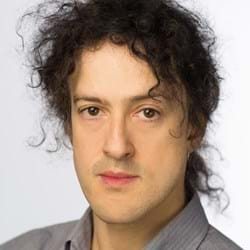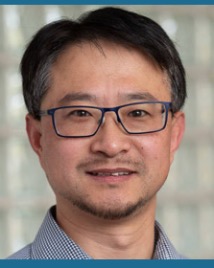DICTA 2022 - Keynote Speakers
 |
Keynote Speech 1 (9:00-10:00 30 November Day 1) Speaker: Alan Yuille, Johns Hopkins Title: TBD. Abstract: TBD. Speaker Biography: Alan Yuille received the BA degree in mathematics from the University of Cambridge in 1976. His PhD on theoretical physics, supervised by Prof. S.W. Hawking, was approved in 1981. He was a research scientist in the Artificial Intelligence Laboratory at MIT and the Division of Applied Sciences at Harvard University from 1982 to 1988. He served as an assistant and associate professor at Harvard until 1996. He was a senior research scientist at the Smith-Kettlewell Eye Research Institute from 1996 to 2002. He was a full professor of Statistics at the University of California, Los Angeles, as a full professor with joint appointments in computer science, psychiatry, and psychology. He moved to Johns Hopkins University in January 2016. His research interests include computational models of vision, mathematical models of cognition, medical image analysis, and artificial intelligence and neural networks. |
 |
Keynote Speech 2 (13:00-14:00 30 November Day 1) Speaker: Philip Torr, Oxford University Title: TBD. Abstract: TBD. Speaker Biography: Professor Philip Torr did his PhD (DPhil) at the Robotics Research Group of the University of Oxford under Professor David Murray of the Active Vision Group. He worked for another three years at Oxford as a research fellow, and still maintains close contact as visiting fellow there. He left Oxford to work for six years as a research scientist for Microsoft Research, first in Redmond, USA, in the Vision Technology Group, then in Cambridge founding the vision side of the Machine Learning and Perception Group. He then became a Professor in in Computer Vision and Machine Learning at Oxford Brookes University, where he has brought in over one million pounds in grants for which he is PI. Recently in 2013, Philip returned to Oxford as full professor where he has established the Torr Vision group. He won several awards including the Marr prize (the highest honour in vision) in 1998. He is a Royal Society Wolfson Research Merit Award Holder. Recently, together with members of his group, he has won several other awards including an honorary mention at the NIPS 2007 conference for the paper 'P. Kumar, V. Kolmorgorov, and P.H.S. Torr, An Analysis of Convex Relaxations for MAP Estimation', in NIPS 21, Neural Information Processing Conference, and (oral) Best Paper at Conference for 'O. Woodford, P.H.S. Torr, I. Reid, and A.W. Fitzgibbon, Global Stereo Reconstruction under Second Order Smoothness Priors', in Proceedings IEEE Conference of Computer Vision and Pattern Recognition, 2008 . More recently he has been awarded best science paper at BMVC 2010 and ECCV 2010. He was involved in the algorithm design for Boujou released by 2D3. Boujou has won a clutch of industry awards, including Computer Graphics World Innovation Award, IABM Peter Wayne Award, and CATS Award for Innovation, and a technical EMMY. He then worked closely with this Oxford based company as well as other companies such as Sony on the Wonderbook project. He is a director of new Oxford based spin out OxSight, and Chief Scientific Advisor for Five AI. He was elected Fellow of the Royal Academy of Engineering (FREng) in 2019, and Fellow of the Royal Society (FRS) in 2021 for contributions to computer vision. In 2021 he was made Turing AI world leading researcher fellow. |
 |
Keynote Speech 3 (9:00-10:00 1 December Day 2) Anton van den Hengel is the founding Director of The Australian Institute for Machine Learning, Australia’s largest machine learning research group, and on many measures its most successful. He is also a Chief Investigator of the Australian Centre of Excellence in Robotic Vision, and a Professor of Computer Science at the University of Adelaide. Professor van den Hengel has been a CI on over $60m in research funding from sources including Google, Facebook, Canon, BHP Billiton and the ARC. Prof van den Hengel has won a number of awards, including the Pearcey Foundation Entrepreneur Award, the SA Science Excellence Award for Research Collaboration, and the CVPR Best Paper prize in 2010. He has authored over 300 publications, has an h-index of 49, has had 8 patents commercialised, formed 2 start-ups, and has recently had a medical technology achieve first-in-class FDA approval. Current research interests include leep learning, vison and language problems, interactive image-based modelling, large-scale video surveillance, and medical machine learning. Prof van den Hengel and his team have developed world leading methods in a range of areas within Computer Vision and Machine learning, including methods which have placed first on a variety of international leaderboards such as: PASCAL VOC (2015 & 2016), CityScapes (2016 & 2017), Virginia Tech VQA (2016 & 2017), and the Microsoft COCO Captioning Challenge (2016). Professor van den Hengel’s team placed 4th in the ImageNet detection challenge in 2015 ahead of Google, Intel, Oxford, CMU and Baidu, and 2nd in ImageNet Scene Parsing in 2016. ImageNet is one of the most hotly contested challenges in Computer Vision. |
 |
Keynote Speech 4 (9:00-10:00 2 December Day 3) Speaker: Hongdong Li, ANU Title: Multi-View 3D Reconstruction of Non-Lambertian Object: traditional approach meets deep-learning method Abstract: Recovering the 3D shape of an object with unknown (possibly non-Lambertian) material is a traditional problem in computer vision, and is very challenging to solve. In this talk, I will report two of our most recent methods for tackling this classic computer vision problem. Our first method follows the traditional approach which formulates the problem as a complex energy minimization problem. I will explain how we manage to solve the underlying non-convex optimization via a parameter-splitting and efficient randomized search algorithm. Our second method is a new deep learning-based approach, based on a simple and small recurrent neural-net, which is used to over-parameterize the unknown shape and materials to allow for efficient loss minimization. Both methods are tested on synthetic and real images to validate their efficacy and superior performance. Speaker Biography: Dr Hongdong Li is a professor with ANU - Australian National University. He was one of the Founding CIs for the ARC Centre of Excellence for Robotic Vision. He is on leave from the ANU now and providing technical consulting service to Kite bird Research Lab in Canberra. His research addresses both fundamental/theoretical and applied problems in computer vision. He is best known for contributions in non-rigid structure from motion, point cloud registration and camera pose and robot navigation (autonomous driving) and 3D computer vision in general. He has won multiple times most prestigious paper awards at major international conferences. One of his recent works on visual sign language processing (machine translation) was selected among the finalists for the CVPR 2020 Best Paper Award. Professor Li serves on the Editorial Boards for several major international journals, including the IEEE Transactions on PAMI and is the General Chair for ACCV 2022 and a SAC member for CVPR2023. |